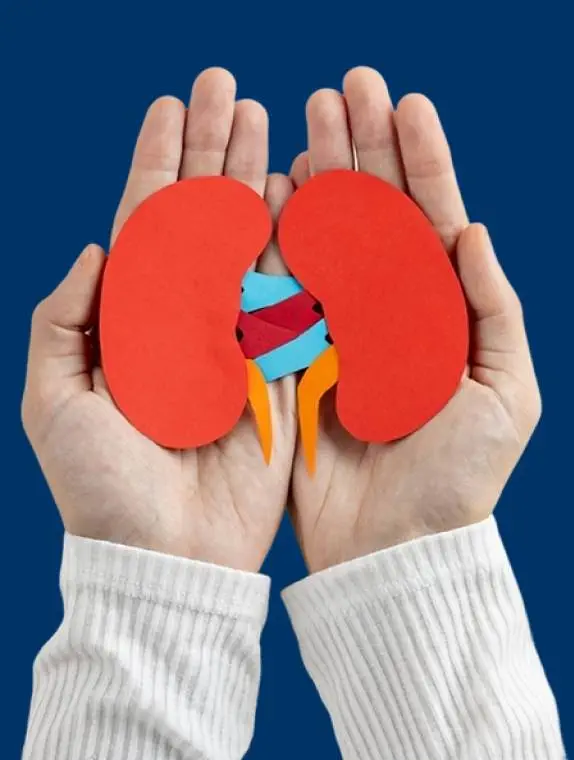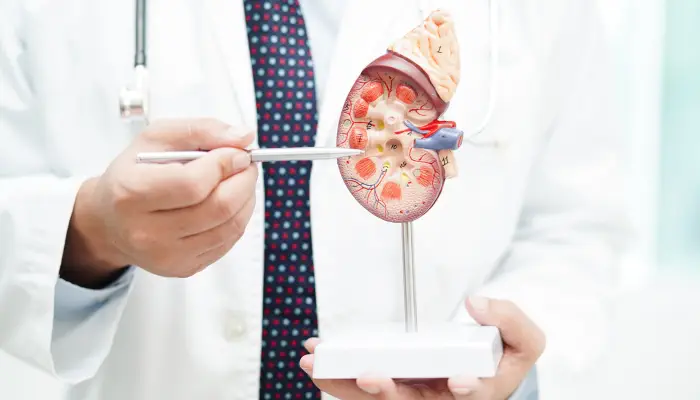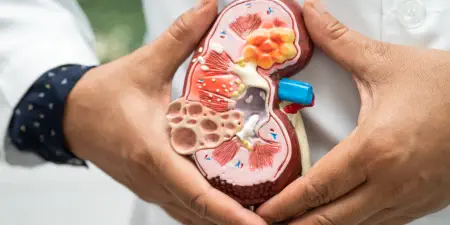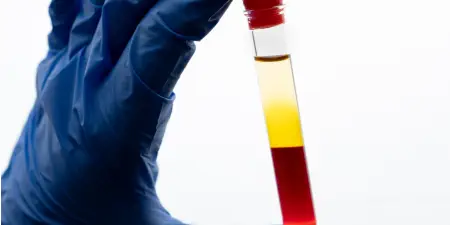Uretero Renoscopy

Conquer Kidney Stones: Be Pain-Free With Expert Ureterorenoscopy
Ureterorenoscopy is a minimally invasive procedure to diagnose and treat conditions of the ureter and kidney. Renal calculi, or kidney stones, develop in the kidneys and travel down the ureter, the extended tube that drains urine from the kidneys to the bladder. If the stones are small, they can easily navigate this narrow pathway, enter the bladder, and be expelled from the body.
However, large renal calculi can get stuck in the ureter, obstructing the free flow of urine and leading to Hydronephrosis or kidney swelling. The renal calculi stuck in the ureter can cause excruciating pain and prevent bladder emptying.
In this scenario, your uro specialist, Dr Aarthy, may suggest a Ureterorenoscopy (URS). This procedure involves using a Ureteroscope, a semi-rigid telescope to view the ureter, and a uretero-renoscope to examine the kidney. Dr. Aarthy has helped many patients overcome the extreme discomfort of kidney stone obstruction.
Uretero-Renoscopy: When is it Necessary?
The ureteroscopy procedure is an innovative, minimally invasive procedure that helps diagnose underlying issues and offers effective treatment options. It’s particularly recommended for urological conditions that benefit from its dual capabilities. Ureterorenoscopy (URS) is recommended for:
Your Solution for Kidney Stone Relief

- Before Surgery
- What to Expect?
- Post-Surgical Care
Ureteroscopy: How to Prepare
Before your ureteroscopy appointment, Dr Aarthy may instruct you about when to refrain from eating or drinking and guide you with medication management, which is vital to the procedure’s success and safety.
Undergo a thorough physical examination, including ultrasound or X-rays, to gain a detailed understanding of your condition.
Follow your doctor’s advice to discontinue blood thinners and anticoagulants at least one week before the procedure.
Inform your doctor about all medications, including herbal supplements, that you take regularly.
Take prescribed antibiotics promptly to address any urinary tract infections before the procedure.
Avoid consuming food or water for 6-8 hours before the procedure or as directed by your doctor.
Ureteroscopy Surgery: What to Expect
Your doctor will walk you through the ureterorenoscopy procedure and answer your questions if you have any. Here’s a breakdown of the steps involved:
Before your procedure begins, you will receive an antibiotic injection to prevent potential infections. After ensuring you are not allergic to the medication, your anaesthetist will administer general anaesthesia to keep you unconscious and comfortable throughout the procedure.
Your doctor will insert the ureteroscope into the urethra and access the ureter and kidney through the bladder.
The camera at the tip of the device relays images of the insides of the urinary tract to a monitor, allowing your doctor to assess your condition.
If a stone or any other irregularity is detected, it will be picked up using specialised tools or fragmented using an ultrasonic or electrohydraulic probe and removed from your body via the urethra.
After the stone is extracted, a stent might be placed in the ureter for a few days to decrease any swelling from the procedure. It will be removed later.
The collected kidney stone fragments will be sent for further laboratory analysis to identify their type and personalise your treatment accordingly.
Uretero-Renoscopy Surgery: Post-Surgical Care
Before you return home, your doctor will discuss some essential post-procedural guidelines to facilitate quick healing and return to normalcy.
You will receive the necessary medications to aid your recovery before you are discharged from the hospital.
Small amounts of blood in the urine after the procedure are normal and should resolve within a few days.
Ensure you consume at least 2 litres of water daily to avoid infection unless otherwise advised by your doctor.
You may experience pain in the kidney area when voiding your bladder in case a stent was placed during the procedure.
You must consult your doctor if you have a fever, worsening pain during urination, body pain, foul-smelling urine, or bloody urine that lasts more than three days.
Do not fail to schedule a follow-up appointment about one week after discharge.
Benefits of Undergoing Ureteroscopy

Minimally Invasive
Experience minimal pain and benefit from faster recovery compared to conventional modalities.
High Success Rate
Gain much-needed relief from the pain and discomfort with the effective removal of kidney and ureteral stones.
No External Incisions
Skip painful scars and remain scar-free. The procedure uses the body’s natural urinary routes, eliminating the need for any external incisions or scars.
Brief Hospitalisation
Return home on the same day of the procedure as long as you are free of complications once the day surgery is done.
Recovery Time
Avoid strenuous activities and give your body time to heal from the procedure. After a few days, you can return to your routine life.
Redefine Your Urological Health






